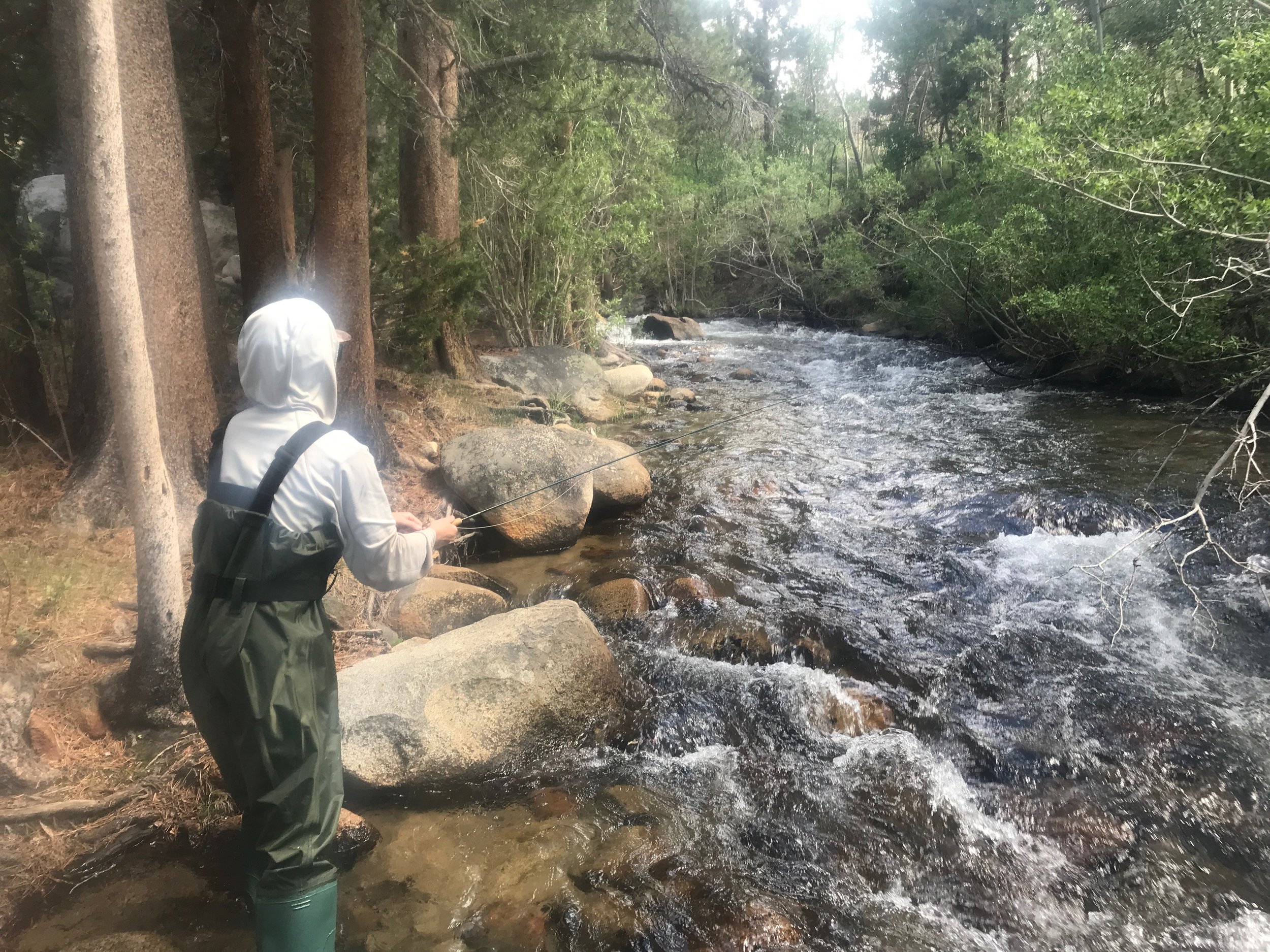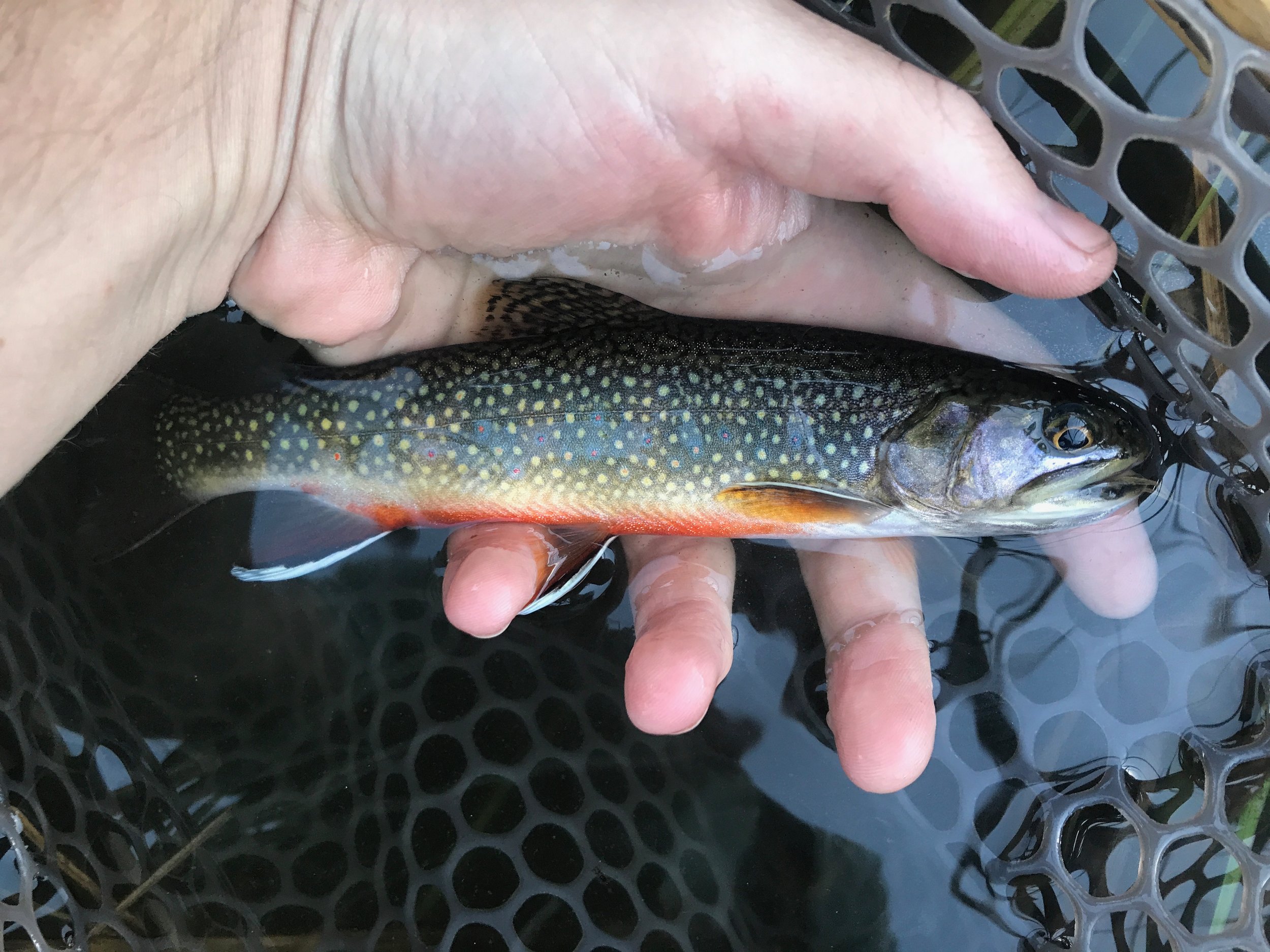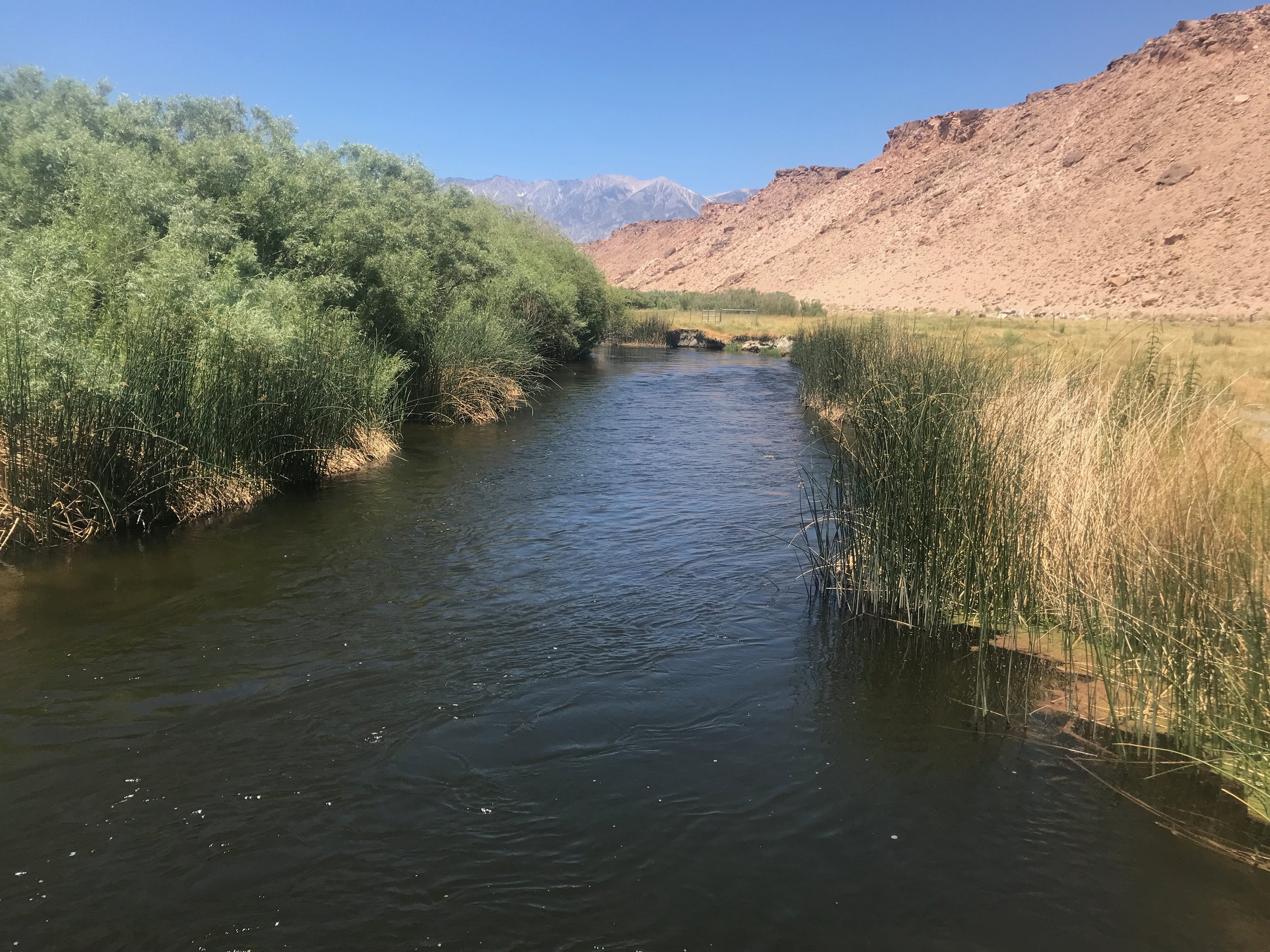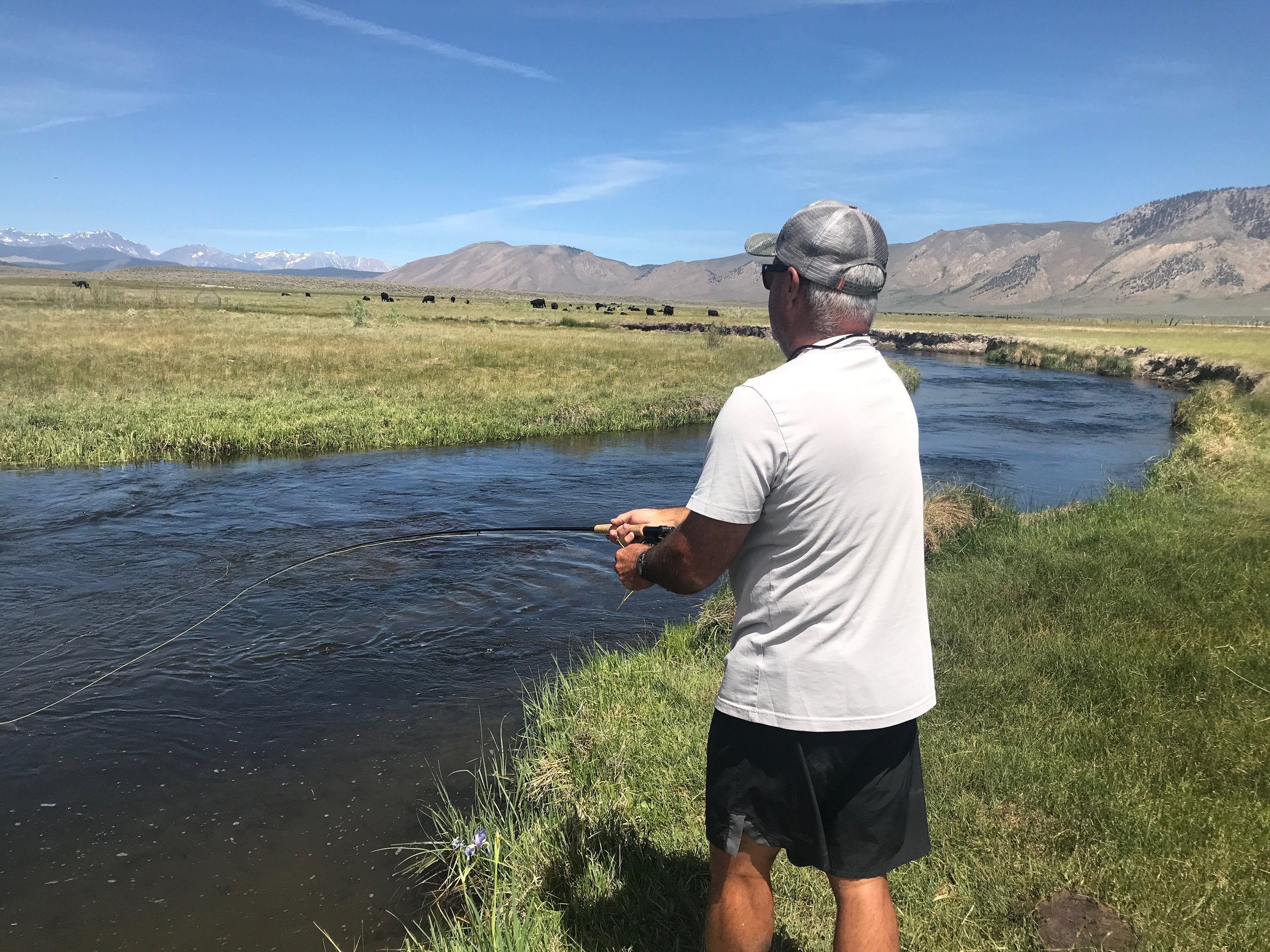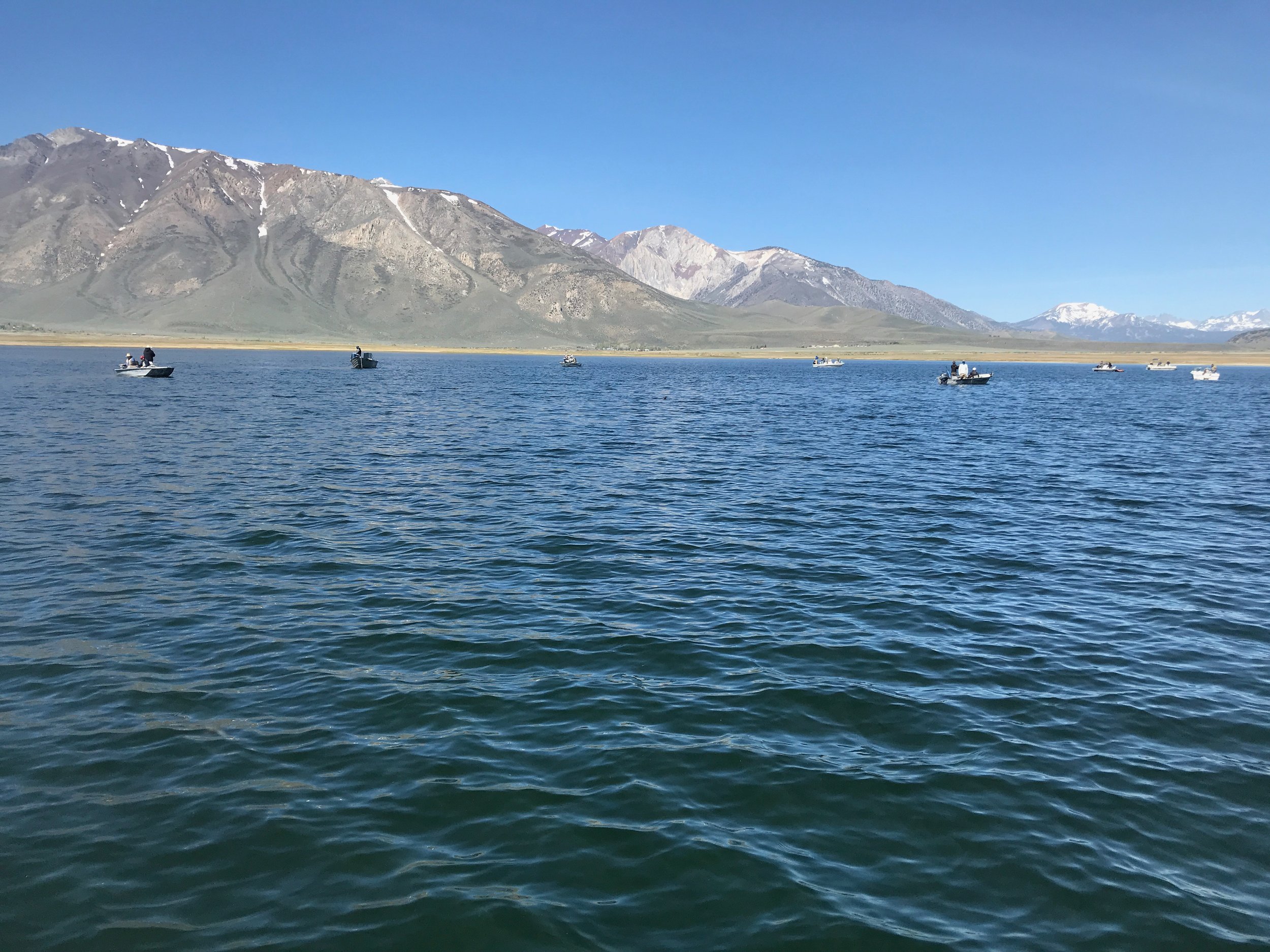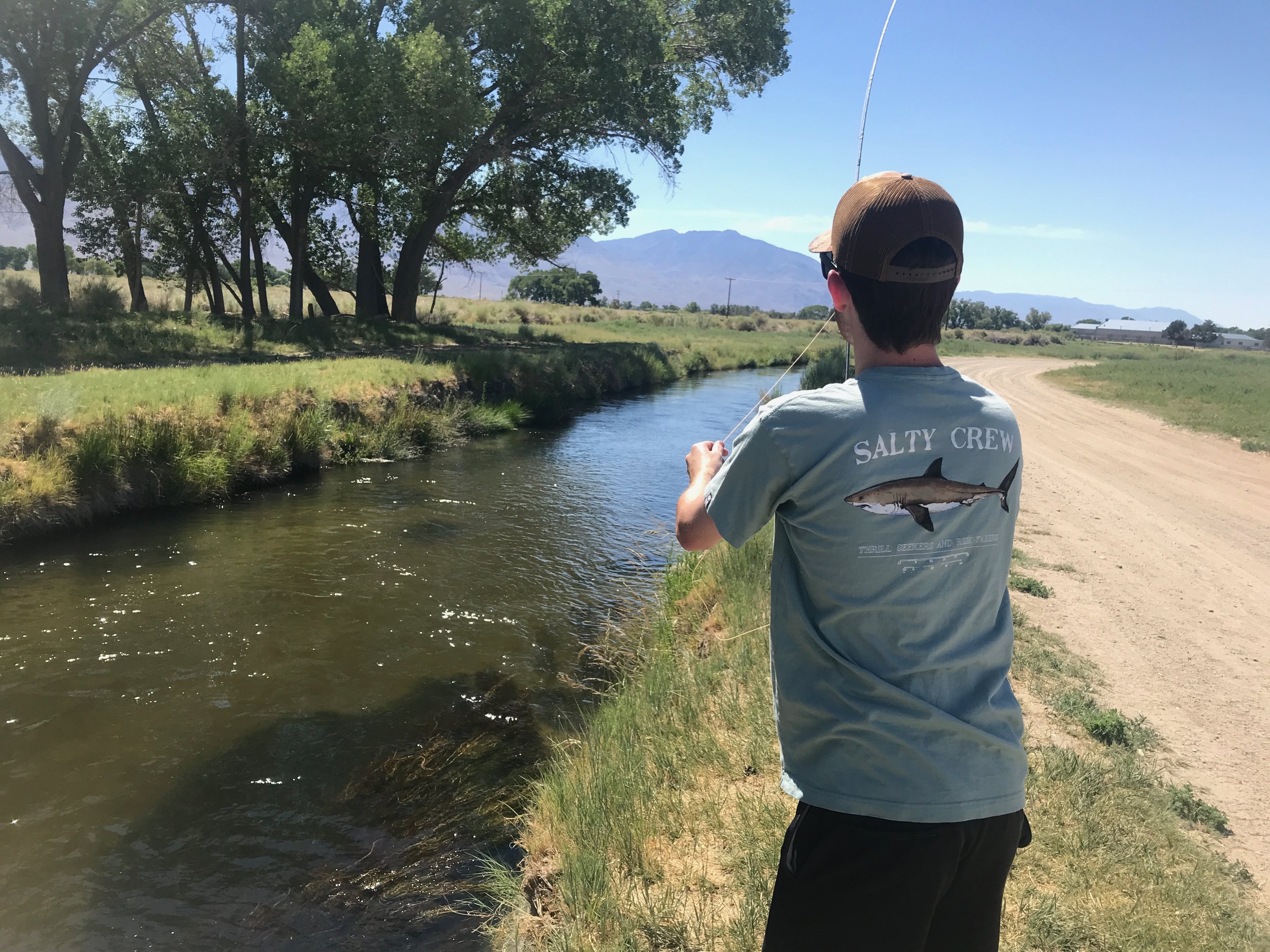Wind continues to hamper fly fishers plying the waters of the Eastern Sierra. Some of the winds have been strong enough to temporarily close a few lakes. When the wind does not blow fishing is enjoyable. Hatches on most Eastern Sierra waters are not as strong as I would expect for this time of year. Hatches on the spring creeks seems to be slow. Hatches on the freestone streams seems to be strong and bringing lots of trout to the surface for fly fishers fishing with dry flies. On opportunistic waters like freestones fly fishers should be fishing their favorite dry fly pattern.
The winds on Sunday were strong enough to blow my favorite hat off my head and into Rock Creek never to be seen again.
Freestone Streams:
Rock Creek:
Spring runoff has the creek running bank to bank. The water is very fishable if you concentrate your efforts on the edges and wider sections of the river. This is a great place to fish your favorite dry fly. My favorite dry flies are Adams parachute, elk hair caddis, and a royal Wulff. These flies have been fooling good numbers of pan sized browns, rainbows, and stocker rainbow.
Rock Creek is a freestone stream that offers fly fishers opportunistic fly fishing with their favorite dry fly.
Bishop Creek South Fork:
This area is producing wild brook trout, wild brown trout, and hatchery rainbows. I’m fly fishing upstream with dry flies that I’m casting to the softer spots on the sides of the creek and in the pocket water. The flows in Bishop Creek are not affected by the runoff. This is a great spot to fish a dry and dropper rig. For the nymph I’m using bead head flash back gold ribbed hare’s ears and bead head flash back pheasant tail nymphs. Creek fishing is fly fishing for opportunistic trout that are looking up for insects on the surface film. This makes for excellent dry fly fishing.
Wild brook trout of the south fork of Bishop Creek offer fly fishers a seldom seen trout species in the front country.
Lower Owens River:
Wild Trout Section:
Flows are at 225 CFS and daytime temperatures are in the low 90’s. This is not ideal conditions. For those anglers willing to brave the heat and the high flows are finding unpressured trout willing to take flies. On the windy days fly fishers can get some relief fly fishing on the lower Owens River by using the willows as a wind break. Getting nymphs down on the bottom where the trout are feeding is the most productive method. Euro nymphing is the perfect method for working nymphs on the bottom of the river. Be sure to use enough weight in your flies to keep your nymphs in contact with the substrate. Gold ribbed hare’s ears, stoner nymphs, Butano nymphs, caddis nymphs, and caddis emergers are fooling the wild brown trout.
The lower Owens River is flowing at 225 CFS in the wild trout section of the lower Owens River.
Hot Creek:
Interpretive Site:
Where you can find concentrations of selectively feeding wild trout, I would work those areas thoroughly with size 20 gray caddis patterns and size 20 blue wing olive patterns. The hatch has been over quickly each morning being done by noon or 1:00 P.M. Use 6x tippet and a drag free drift to catch the wary trout that call the interpretive site home.
The middle section of Hot Creek is a great place to learn how to nymph fish under an indicator or with a dry and dropper technique.
Hot Creek:
Canyon Section:
Nymphing has been more productive than dry fly fishing as there has not been much of a hatch in the canyon section. I’m using size 20 bead head flash back pheasant tail nymphs, size 16 bead head flash back gold ribbed hare’s ears, size 12 olive scuds, and size 12 olive burlap caddis in the open zones between the weed beds. The fish are not feeding like I would expect and I’m covering a lots of water to find a few trout willing to take my nymphs under a size 16 parachute Adams or a size 14 mini Chernobyl ant.
Jeff Duran from Corona leaning how to indicator nymph on the upper Owens River.
Upper Owens River:
Above Benton Crossing Bridge:
Nymphing under an indicator or nymphing a Euro nymph rig has been the most productive method of fly fishing the river. The hatches are just starting to become prolific enough to bring trout to the surface. Pale morning duns, little yellow stones, and caddis are the insects hatching bringing the trout to the surface. The water upstream of the irrigated cattle fields are clearer than the water down stream of the irrigated fields. I’m hoping this will be a good hooper season on the upper Owens River. We will know by mid to late July.
Boaters and float tubers on Crowley have moved out to 30 feet of depth and are having a hard time finding trout to consistently take midges.
Crowley Lake:
Fish have moved into deeper water; an algae bloom is starting and the daphnia hatch is in full swing. This has slowed the midge fly fishing on the lake. Most boats and or float tubers are getting a few fish per morning session. The fish have been in 30 feet of water and taking tiger midges, zebra midges, gray midges, and Albino midges. Most fly fishers are fishing these midges under an indicator. A few fly fishers are fishing midge imitations on a full sink line. The fishing should pick back up in a week or two.
Bishop Creek Canal is a great spot to learn how to fly fish.
Bishop Creek Canal:
Behind the Ford Dealer:
The canal is affected by the heat and the wind. Best bet is to get out early and beat the heat and the wind. Nymphing continues to be the most productive method of fly fishing the canal. Fish your nymphs in the slots between the weed beds. I like fishing the sections below the Los Angeles Department of Water and Power weirs as these fast moving oxygenated areas produce more trout for me. I’m fishing with bead head flash back gold ribbed hare’s ears, bead head flash back pheasant tail nymphs, and green/gold wire Prince nymphs.


